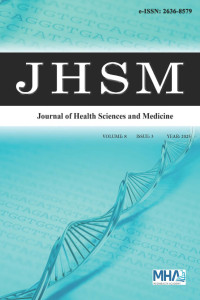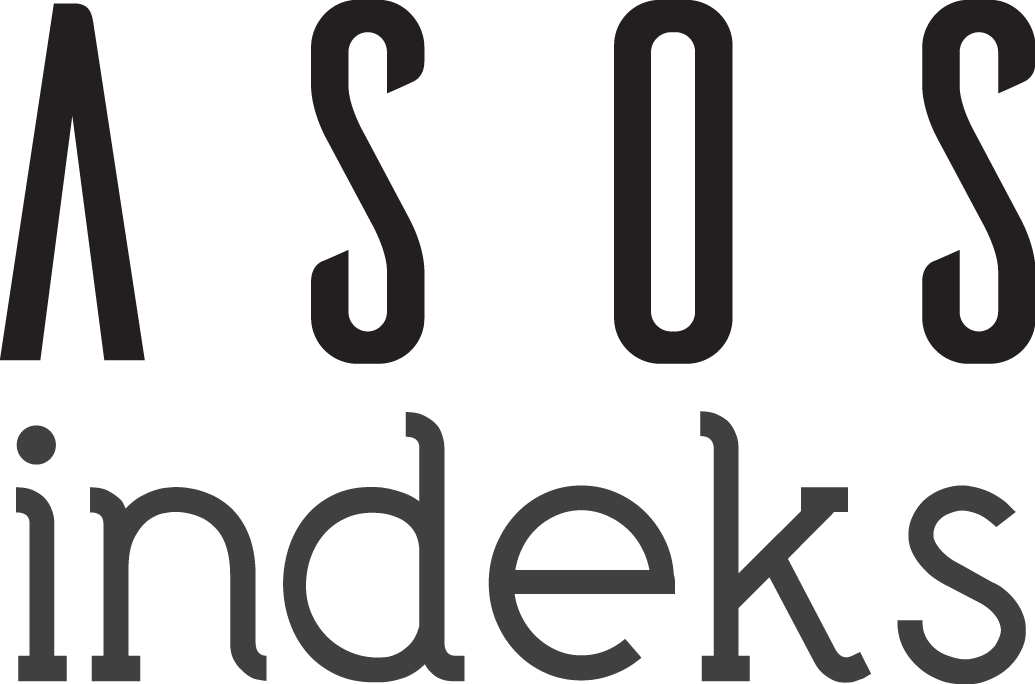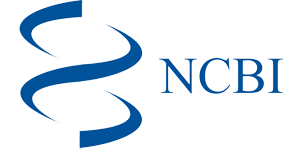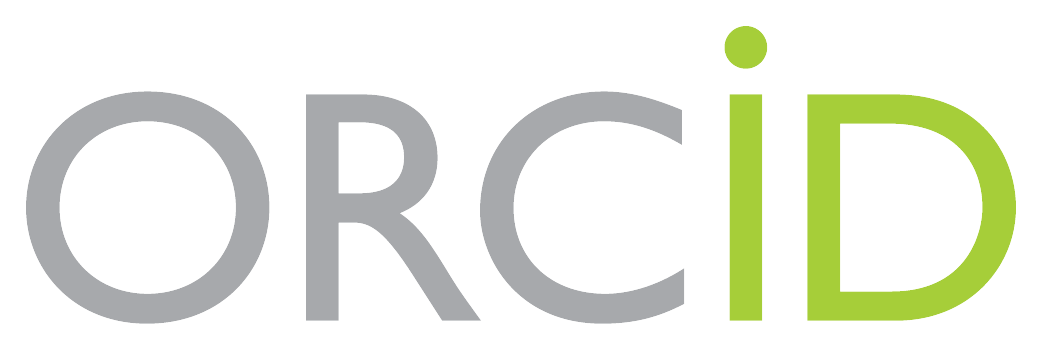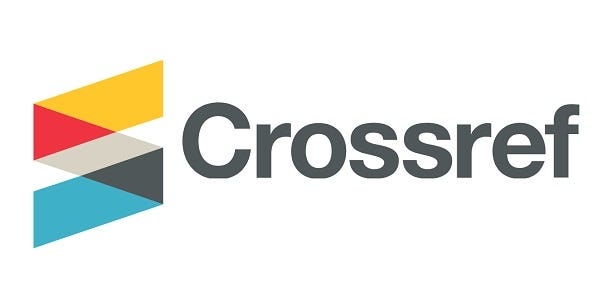Comparison of creativity and critical thinking among female students of selective and public high schools
Abstract
Aims: This study is conducted to provide comparison between female students of selective and public high schools (PHS) in Urmia city in Iran, using creativity and critical thinking measures.
Methods: Statistical randomized-sampling technique is used in selection of 90 students from one selective high school (SHS) and 260 students from three PHS. The Torrance creativity and California critical thinking inventories were used for data collection.
Results: A causal-comparative strategy is used in the analysis, while one-way ANOVA test and T test between independent groups were used to test the hypothesis regarding the difference between students in SHS and PHS. Results showed that there is a significant difference between SHS and PHS groups (fluidity, expansion, initiative, and flexibility).
Conclusion: It is concluded that while considering the critical thinking, no significant difference exists between the components of deductive and inductive analysis. But, differences between selected groups was observed when considering the analysis and inference components. According to the results obtained for creativity, a meaningful relationship between all of the elements in both of the selected groups with p<0.001 is observed.
Ethical Statement
Etik kurul belgesi Farsça olduğundan dolayı direkt yuklenmemiştir. İstendiği taktirde sunulabilmektedir
References
- Andiyana MA, Maya R, Hidayat W. Analysis of mathematical creative thinking ability of MTs students on circle material. J Mathemat Edu Study Program. 2018;1(3):239-248.
- Larasati N, Santosa S, Sari DP. The Influence of Cooperative Learning Model of Group Investigation Type Combined Concept Map to Student’ s Creative Thinking S. Proceeding Biology Education Conference 2018, Indonesia; P-ISSN: 2528-5742, 15:130-137.
- Juliantine T. The development of student creativity through the implementation of the inquiry learning model in physical education. Res Edu. 2009:163. doi:10.52547/aassjournal.1121
- Amabile TM. Componential theory of creativity. Working paper-12096, 2012; Harvard Business School, US.
- Girgin D, Akcanca N. An innovative learning approach in education: collaborative creativity model. Trakya Uni J Soc Sci. 2021;23(1):367-391. doi:10.26468/trakyasobed.753592
- Matraeva AD, Rybakova MV, Vinichenko MV, Oseev AA, Ljapunova NV. Development of creativity of students in higher educational institutions: assesment of students and experts. Uni J Edu Res. 2020;8(1): 8-16. doi:10.13189/ujer.2020.080102
- Gülel G. Investigation of creativity levels of prospective form teachers based on some variables. Master’s thesis, 2005; Pamukkale University, Turkey. (In Turkish)
- Kanli E. Investigating the relations between scientific creativity, gender and scientific attitudes of gifted learners. Elementary Edu Online. 2017;16(4):1792-1802. doi:10.17051/ilkonline.2017.342992
- Agnoli S, Zanon M, Mastria S, Avenanti A, Corazza GE. Enhancing creative cognition with a rapid right-parietal neurofeedback procedure. Neuropsychologia. 2018;118(Pt A):99-106. doi:10.1016/j.neuropsychologia.2018.02.015
- Gralewski J, Karwowski M. Are teachers’ implicit theories of creativity related to the recognition of their students’ creativity? J Creat Behav. 2018;52(2):156-167. doi:10.1002/jocb.140
- Lipman M. Thinking in education. 2nd Edition, Cambridge: Cambridge University Press 2003.
- Santrock JW. Child development. New York: McGraw-Hill 2007. pp: 213.
- Brodin EM, Frick L. Conceptualizing and encouraging critical creativity in doctoral education. Int J Res Develop. 2011;2(2):133-151. doi:10.1108/17597511111212727
- Adriansen HK. How criticality affects students’ creativity? In C. Nygaard, N. Courtney & C. Holtham (Eds.), Teaching creativity; Libri Publishing: Oxfordshire, 2010; pp. 65-84.
- Saputro AD, Atun S, Wilujeng I, Ariyanto A, Arifin S. Enhancing pre-service elementary teachers’ self-efficacy and critical thinking using problem-based learning. Eur J Edu Res. 2020;9(2):765-773. doi:10.12973/eu-jer.9.2.765
- Paul R, Elder L. Critical Thinking Tools for Taking Charge of Your Learning and Your Life. Prentice Hall Publishing, 2006; New Jersey, US. ISBN: 1538138743.
- Marzano RJ. Dimensions of thinking: a framework for curriculum and instruction. The Association for Supervision and Curriculum Development, 125 N. West St., Alexandria, 1988; VA 22314-2798.
- Torrance EP. Growing up creatively gifted: the 22-year longitudinal study. Creat Child Adult Quarterly. 1980;5(3):148-158.
- Torrance EP. Predicting the creativity of elementary school children and the teacher who made a difference. Gifted Child Quarterly. 1981;25:55-62. doi:10.1177/001698628102500203
- Torrance EP. Empirical validation of criterion referenced indicators of creative ability through a longitudinal study. Creat Child Adult Quarterly. 1981;6(3):136-140.
- Abedi J. Creativity and new methods in measuring it. J Psychol Res. 1994;1:2. (In Farsi)
- Facione PA, Facione NC, Blohm KH, Carol AF. Test manual: the California critical thinking skills test. Revised edition. California Academic Press, 1998; Millbrae, USA.
- Eslami M. Providing a model for designing the implementation of a critical reading program and its effect on critical thinking and analytical writing of Tehran teacher training students. PhD Thesis in Curriculum Planning, 2004; University of Tehran, Iran (In Farsi).
- Bigdeli H. Investigating the Relationship between Critical Thinking and Self-Esteem and Academic Achievement in Undergraduate Students of Humanities and Engineering, University of Tehran. Master Thesis in Educational Research, 2006; University of Tehran, Iran (in Farsi).
- Chan DW. Self-perceived creativity, Family hardiness, and emotional intelligence of Chinese gifted students in Hong Kong. J Second Gift Edu. 2005;16(2-3):47-56. doi:10.4219/jsge-2005-4
- Cortina JM. What is coefficient alpha? An examination of theory and applications. J Appl Psychol. 1993;78(1):98-104. doi:10.1037/0021-9010. 78.1.98
- Schmitt N. Uses and abuses of coefficient alpha. Psychol Assess. 1996; 8(4):350-353. doi:10.1037/1040-3590.8.4.350
- Alborzi S, Ostovar S. Thinking styles of gifted and non-gifted students in Iran. Psychol Rep. 2007;100:1076-1082. (in Farsi)
- Ghasemi F, Oghlidos T. Investigating the effect of teaching the course “fostering creativity in children” on increasing the creativity of female students in the third year of childcare in Shiraz vocational high school. Quarter J Edu Innovat. 2006;4(13):58-84. (in Farsi)
- Mohseni K, Azizmalayeri K, Omidi M. Comparison of creativity and critical thinking of smart and normal students, 7th International Conference on Science and Technology of Educational Sciences, Social Studies and Psychology of Iran, 2022; Tehran, Iran.
Seçmeli ve normal devlet liselerindeki kız öğrencilerin yaratıcılık ve eleştirel düşünme özelliklerinin karşılaştırılması
Abstract
Bu çalışma, yaratıcılık ve eleştirel düşünme ölçütlerini kullanarak İran'ın Urmiye Şehrindeki seçmeli ve devlet liselerindeki kız öğrenciler arasında karşılaştırma yapmak amacıyla yapılmıştır. Bir Seçmeli Liseden (SHS) 90 öğrencinin ve üç Devlet Lisesinden (PHS) 260 öğrencinin seçiminde istatistiksel rastgele örnekleme tekniği kullanılmıştır. Veri toplamak için Torrance yaratıcılık ve California eleştirel düşünme envanterleri kullanıldı. Daha sonra analizde nedensel karşılaştırma stratejisi kullanılmış, SHS ve PHS öğrencileri arasındaki farka ilişkin hipotezi test etmek için tek yönlü ANOVA testi ve bağımsız gruplar arası t testi kullanılmıştır. Sonuçlar SHS ve PHS grupları arasında (akışkanlık, genişleme, inisiyatif ve esneklik) anlamlı bir fark olduğunu gösterdi. Dolayısıyla eleştirel düşünme dikkate alındığında tümdengelimli ve tümevarımsal analizin bileşenleri arasında anlamlı bir fark olmadığı sonucuna varılmıştır. Ancak analiz ve çıkarım bileşenleri dikkate alındığında seçilen gruplar arasında farklılıklar gözlendi. Yaratıcılık için elde edilen sonuçlara göre seçilen her iki grupta da tüm unsurlar arasında p<0,001 ile anlamlı bir ilişki görülmektedir.
References
- Andiyana MA, Maya R, Hidayat W. Analysis of mathematical creative thinking ability of MTs students on circle material. J Mathemat Edu Study Program. 2018;1(3):239-248.
- Larasati N, Santosa S, Sari DP. The Influence of Cooperative Learning Model of Group Investigation Type Combined Concept Map to Student’ s Creative Thinking S. Proceeding Biology Education Conference 2018, Indonesia; P-ISSN: 2528-5742, 15:130-137.
- Juliantine T. The development of student creativity through the implementation of the inquiry learning model in physical education. Res Edu. 2009:163. doi:10.52547/aassjournal.1121
- Amabile TM. Componential theory of creativity. Working paper-12096, 2012; Harvard Business School, US.
- Girgin D, Akcanca N. An innovative learning approach in education: collaborative creativity model. Trakya Uni J Soc Sci. 2021;23(1):367-391. doi:10.26468/trakyasobed.753592
- Matraeva AD, Rybakova MV, Vinichenko MV, Oseev AA, Ljapunova NV. Development of creativity of students in higher educational institutions: assesment of students and experts. Uni J Edu Res. 2020;8(1): 8-16. doi:10.13189/ujer.2020.080102
- Gülel G. Investigation of creativity levels of prospective form teachers based on some variables. Master’s thesis, 2005; Pamukkale University, Turkey. (In Turkish)
- Kanli E. Investigating the relations between scientific creativity, gender and scientific attitudes of gifted learners. Elementary Edu Online. 2017;16(4):1792-1802. doi:10.17051/ilkonline.2017.342992
- Agnoli S, Zanon M, Mastria S, Avenanti A, Corazza GE. Enhancing creative cognition with a rapid right-parietal neurofeedback procedure. Neuropsychologia. 2018;118(Pt A):99-106. doi:10.1016/j.neuropsychologia.2018.02.015
- Gralewski J, Karwowski M. Are teachers’ implicit theories of creativity related to the recognition of their students’ creativity? J Creat Behav. 2018;52(2):156-167. doi:10.1002/jocb.140
- Lipman M. Thinking in education. 2nd Edition, Cambridge: Cambridge University Press 2003.
- Santrock JW. Child development. New York: McGraw-Hill 2007. pp: 213.
- Brodin EM, Frick L. Conceptualizing and encouraging critical creativity in doctoral education. Int J Res Develop. 2011;2(2):133-151. doi:10.1108/17597511111212727
- Adriansen HK. How criticality affects students’ creativity? In C. Nygaard, N. Courtney & C. Holtham (Eds.), Teaching creativity; Libri Publishing: Oxfordshire, 2010; pp. 65-84.
- Saputro AD, Atun S, Wilujeng I, Ariyanto A, Arifin S. Enhancing pre-service elementary teachers’ self-efficacy and critical thinking using problem-based learning. Eur J Edu Res. 2020;9(2):765-773. doi:10.12973/eu-jer.9.2.765
- Paul R, Elder L. Critical Thinking Tools for Taking Charge of Your Learning and Your Life. Prentice Hall Publishing, 2006; New Jersey, US. ISBN: 1538138743.
- Marzano RJ. Dimensions of thinking: a framework for curriculum and instruction. The Association for Supervision and Curriculum Development, 125 N. West St., Alexandria, 1988; VA 22314-2798.
- Torrance EP. Growing up creatively gifted: the 22-year longitudinal study. Creat Child Adult Quarterly. 1980;5(3):148-158.
- Torrance EP. Predicting the creativity of elementary school children and the teacher who made a difference. Gifted Child Quarterly. 1981;25:55-62. doi:10.1177/001698628102500203
- Torrance EP. Empirical validation of criterion referenced indicators of creative ability through a longitudinal study. Creat Child Adult Quarterly. 1981;6(3):136-140.
- Abedi J. Creativity and new methods in measuring it. J Psychol Res. 1994;1:2. (In Farsi)
- Facione PA, Facione NC, Blohm KH, Carol AF. Test manual: the California critical thinking skills test. Revised edition. California Academic Press, 1998; Millbrae, USA.
- Eslami M. Providing a model for designing the implementation of a critical reading program and its effect on critical thinking and analytical writing of Tehran teacher training students. PhD Thesis in Curriculum Planning, 2004; University of Tehran, Iran (In Farsi).
- Bigdeli H. Investigating the Relationship between Critical Thinking and Self-Esteem and Academic Achievement in Undergraduate Students of Humanities and Engineering, University of Tehran. Master Thesis in Educational Research, 2006; University of Tehran, Iran (in Farsi).
- Chan DW. Self-perceived creativity, Family hardiness, and emotional intelligence of Chinese gifted students in Hong Kong. J Second Gift Edu. 2005;16(2-3):47-56. doi:10.4219/jsge-2005-4
- Cortina JM. What is coefficient alpha? An examination of theory and applications. J Appl Psychol. 1993;78(1):98-104. doi:10.1037/0021-9010. 78.1.98
- Schmitt N. Uses and abuses of coefficient alpha. Psychol Assess. 1996; 8(4):350-353. doi:10.1037/1040-3590.8.4.350
- Alborzi S, Ostovar S. Thinking styles of gifted and non-gifted students in Iran. Psychol Rep. 2007;100:1076-1082. (in Farsi)
- Ghasemi F, Oghlidos T. Investigating the effect of teaching the course “fostering creativity in children” on increasing the creativity of female students in the third year of childcare in Shiraz vocational high school. Quarter J Edu Innovat. 2006;4(13):58-84. (in Farsi)
- Mohseni K, Azizmalayeri K, Omidi M. Comparison of creativity and critical thinking of smart and normal students, 7th International Conference on Science and Technology of Educational Sciences, Social Studies and Psychology of Iran, 2022; Tehran, Iran.
Details
| Primary Language | English |
|---|---|
| Subjects | Clinical Psychology, Counselling Psychology, Psychotherapy Practise and Research |
| Journal Section | Original Article |
| Authors | |
| Publication Date | May 30, 2025 |
| Submission Date | January 26, 2025 |
| Acceptance Date | May 5, 2025 |
| Published in Issue | Year 2025 Volume: 8 Issue: 3 |
Interuniversity Board (UAK) Equivalency: Article published in Ulakbim TR Index journal [10 POINTS], and Article published in other (excuding 1a, b, c) international indexed journal (1d) [5 POINTS].
The Directories (indexes) and Platforms we are included in are at the bottom of the page.
Note: Our journal is not WOS indexed and therefore is not classified as Q.
You can download Council of Higher Education (CoHG) [Yüksek Öğretim Kurumu (YÖK)] Criteria) decisions about predatory/questionable journals and the author's clarification text and journal charge policy from your browser. https://dergipark.org.tr/tr/journal/2316/file/4905/show
The indexes of the journal are ULAKBİM TR Dizin, Index Copernicus, ICI World of Journals, DOAJ, Directory of Research Journals Indexing (DRJI), General Impact Factor, ASOS Index, WorldCat (OCLC), MIAR, EuroPub, OpenAIRE, Türkiye Citation Index, Türk Medline Index, InfoBase Index, Scilit, etc.
The platforms of the journal are Google Scholar, CrossRef (DOI), ResearchBib, Open Access, COPE, ICMJE, NCBI, ORCID, Creative Commons, etc.
| ||
|
Our Journal using the DergiPark system indexed are;
Ulakbim TR Dizin, Index Copernicus, ICI World of Journals, Directory of Research Journals Indexing (DRJI), General Impact Factor, ASOS Index, OpenAIRE, MIAR, EuroPub, WorldCat (OCLC), DOAJ, Türkiye Citation Index, Türk Medline Index, InfoBase Index
Our Journal using the DergiPark system platforms are;
Journal articles are evaluated as "Double-Blind Peer Review".
Our journal has adopted the Open Access Policy and articles in JHSM are Open Access and fully comply with Open Access instructions. All articles in the system can be accessed and read without a journal user. https//dergipark.org.tr/tr/pub/jhsm/page/9535
Journal charge policy https://dergipark.org.tr/tr/pub/jhsm/page/10912
Our journal has been indexed in DOAJ as of May 18, 2020.
Our journal has been indexed in TR-Dizin as of March 12, 2021.
Articles published in the Journal of Health Sciences and Medicine have open access and are licensed under the Creative Commons CC BY-NC-ND 4.0 International License.


